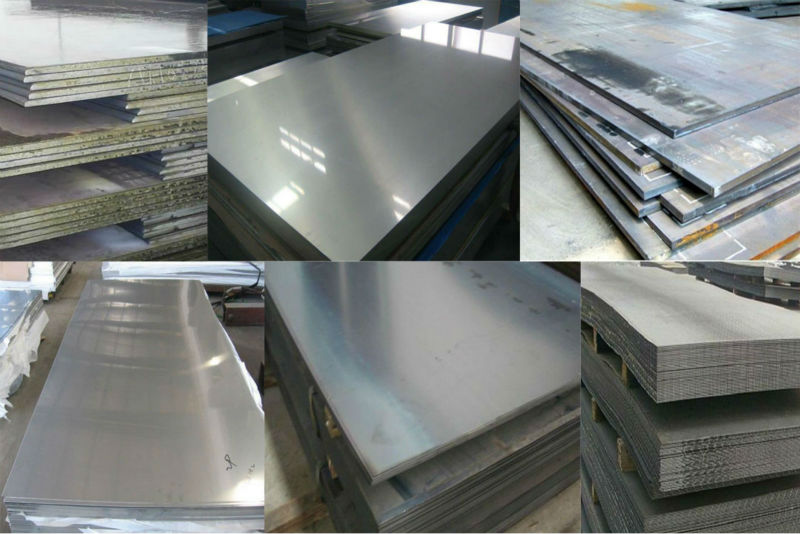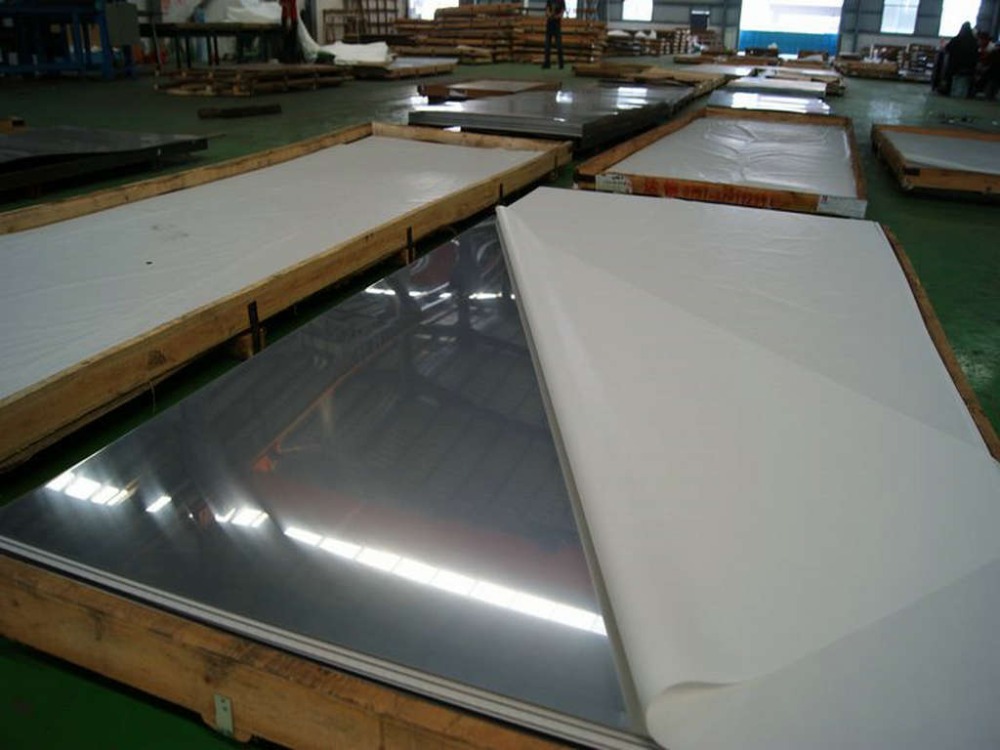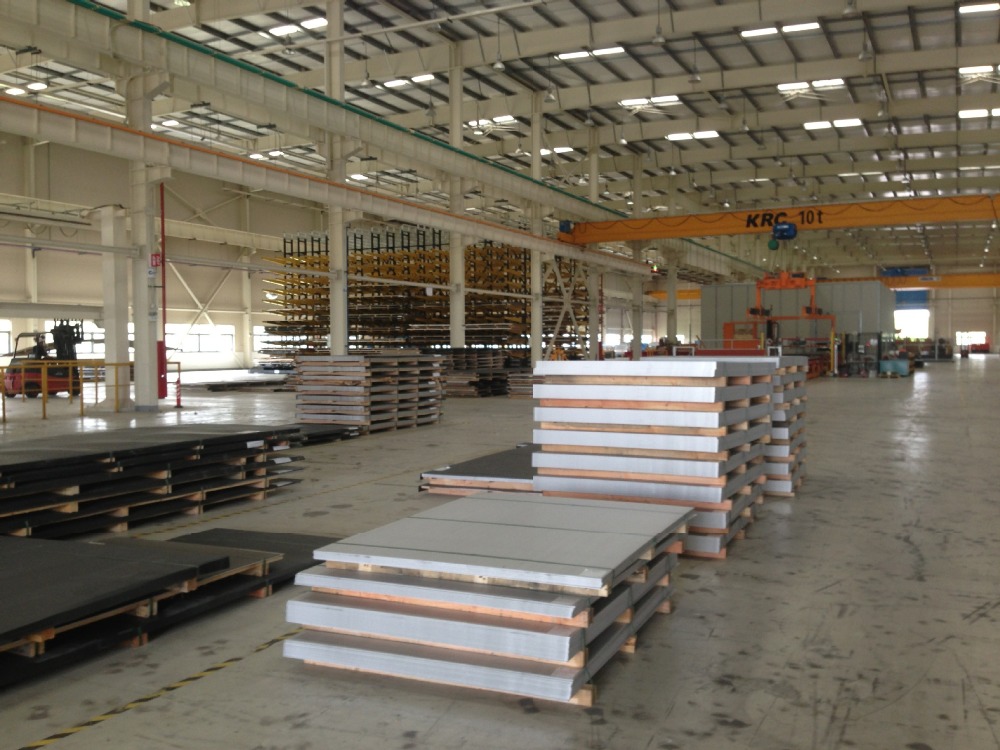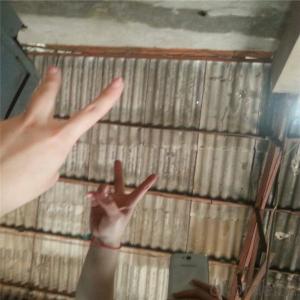409 stainless steel sheetsCold rolled/hot rolled
- Loading Port:
- Shanghai
- Payment Terms:
- TT OR LC
- Min Order Qty:
- 1 m.t.
- Supply Capability:
- 5000 m.t./month
OKorder Service Pledge
OKorder Financial Service
You Might Also Like
Item specifice
Quick Details:
Name: AISI 316/JIS SUS316 Stainless Steel Sheet
Place of Origin:Liaoning,China Brand Name:Dongbei Tegang
Shape:sheet Material:Stainless Steel
Steel Grade: AISI 316/JIS SUS316/GB 0Cr17Ni12Mo2
Size:Thickness:;width:1m~1.25m;length:2m~2.25m
Application: Engine blade for plane, cartridge receiver, fasterners, combustion chamber, aviation, discs, shaft, outside wall of combustion chamber, liquid oxygen-kerosne diesel, shell, cyclinder, propelling unit, spaceflight, aviation, atomice energy, nuclear energy, petroleum, chemicalsk, marine development.
Chemical composition
C | Si | Mn | P | S | Ni | Cr | Mo |
≤0.08 | ≤1.00 | ≤2.00 | ≤0.035 | ≤0.030 | 10.00~14.00 | 16.00~18.50 | 2.00~3.00 |
Packing&Delivery:
Packaging details: According to customer's require or export's standard
Delivery Time: In 30days after we receive 30% deposite
Port: Dalian
MOQ: 1TON
Standard:
| ASTM | USA | Ameirican Society of Mechanical Engineers |
| AISI | USA | Acronym of American Iron and Steel Institute |
| JIS | JP | Japanese Industrial Standards |
| DIN | GER | Deutsches Institut für Normung e.V. |
| UNS | USA | Unified Numbering System |
Product Advantages:
1,good machining property
2,heat resistant steel



Packaging & Shipping
5.Packaging--stainless steel coils


- Q:How do you prevent fingerprints or smudges on stainless steel sheets?
- There are several effective measures you can take to prevent fingerprints or smudges on stainless steel sheets: 1. Regularly wipe down the stainless steel surface with a soft microfiber cloth. Microfiber is great at attracting and trapping dirt, dust, and oils without leaving streaks or smudges. 2. Use warm soapy water to gently clean the stainless steel surface. Mix a small amount of mild dish soap with warm water, then rinse thoroughly and dry with a clean towel. This method effectively removes grease, fingerprints, and smudges. 3. Consider investing in stainless steel cleaners that are specifically formulated to remove fingerprints and smudges. Follow the instructions on the product for best results. 4. Apply a stainless steel protective coating or sealant to create a thin, invisible barrier that repels fingerprints and smudges. Follow the manufacturer's instructions for application and reapply as needed. 5. Avoid using abrasive cleaners, scrub brushes, steel wool, or harsh chemicals that can damage the protective layer of stainless steel. Stick to non-abrasive cleaning methods and tools to maintain the integrity of the surface. 6. Handle stainless steel sheets with care by using clean hands or wearing gloves to prevent the transfer of oils or dirt. Avoid dragging objects across the surface, as this can cause scratches and make it more susceptible to smudging. By incorporating these measures into your cleaning routine and handling practices, you can effectively minimize fingerprints and smudges on your stainless steel sheets, keeping them clean and pristine.
- Q:How do you remove oil stains from stainless steel sheets?
- In order to eliminate oil stains from stainless steel sheets, the following steps can be followed: 1. To start, utilize a clean cloth or paper towel to wipe the affected area and remove any excess oil or grease. 2. Combine a mild dish soap with warm water in a bowl or bucket. Dip a soft sponge or cloth into the soapy mixture and gently scrub the stained area using circular motions. 3. For more stubborn stains, a non-abrasive cleaner specifically designed for stainless steel can be employed. Apply a small amount of the cleaner to the stained area and utilize a soft cloth to rub it in. It is important to adhere to the manufacturer's instructions for the cleaner. 4. Thoroughly rinse the area with warm water to eliminate any soap residue. 5. To further restore shine and eliminate any remaining stains, a paste can be created by combining baking soda and water. Apply the paste to the stained area and allow it to sit for a few minutes. Then, gently scrub with a soft cloth or sponge. Rinse with warm water and dry with a clean towel. 6. To prevent future stains, it is advisable to consider using a stainless steel cleaner or polish. These products can aid in maintaining shine and making it easier to clean any spills or stains that may occur. It is essential to always test any cleaning product or method on a small, inconspicuous area of the stainless steel sheet before applying it to the entire surface. Additionally, it is important to avoid using abrasive materials or scrub brushes with harsh bristles as they can cause scratches on the stainless steel.
- Q:What is called anti fingerprint stainless steel sheet?
- The utility model improves the influence of fingerprints or oil pollution in the use of stainless steel products, and solves the difficult problem that the surface is easy to stick dirt and is difficult to clean. Meanwhile, the utility model avoids the defects of stainless steel surface damage, blackening or losing luster caused by the treatment of fingerprints or oil pollution by common chemical solvents. This is a new type of stainless steel surface processing technology, stainless steel material is not limited: such as 201#, 202#, 301#, 304#, 430#, 443# and so on can be processed!
- Q:How do stainless steel sheets differ from regular steel sheets?
- Stainless steel sheets differ from regular steel sheets in several key aspects. Firstly, stainless steel is an alloy that contains a minimum of 10.5% chromium by mass. This chromium content forms a protective passive layer on the surface of the steel, which helps to prevent corrosion and staining. In contrast, regular steel sheets are prone to rusting and corrosion when exposed to moisture or certain chemicals. Secondly, stainless steel sheets have a higher resistance to heat and oxidation compared to regular steel sheets. This makes stainless steel an ideal choice for applications that require high temperature resistance, such as industrial furnaces or automotive exhaust systems. Thirdly, stainless steel sheets possess excellent strength and durability, making them suitable for various structural and industrial applications. Regular steel sheets may have lower strength and durability, depending on their composition and manufacturing process. Additionally, stainless steel sheets have an attractive appearance due to their smooth and shiny surface. This aesthetic quality makes stainless steel sheets a popular choice in architectural, interior design, and decorative applications. Lastly, stainless steel sheets are known for their hygienic properties, as they are non-porous and easy to clean. This makes them commonly used in industries with strict hygiene requirements, such as food processing, pharmaceuticals, and healthcare. Overall, the major differences between stainless steel sheets and regular steel sheets lie in their corrosion resistance, heat resistance, strength, appearance, and hygiene properties. These unique characteristics make stainless steel sheets a preferred material for many industries and applications.
- Q:What is the area of stainless steel plate?
- For example, a steel coil with known weight, thickness, length, width, and price, you can work out the cost price of each meter, and then you can set the price as you expect it
- Q:Can stainless steel sheets be used for water tanks?
- Yes, stainless steel sheets can be used for water tanks. Stainless steel is highly resistant to corrosion and can withstand the demands of storing water. It is a common material choice for water tanks due to its durability, hygiene, and longevity.
- Q:How do you prevent stress corrosion cracking in stainless steel sheets?
- Several measures can be implemented to prevent stress corrosion cracking in stainless steel sheets. Firstly, it is crucial to select the appropriate grade of stainless steel that is resistant to stress corrosion cracking. While commonly used grades like 304 and 316 have good resistance, more aggressive environments may require specialized alloys such as duplex stainless steels or high nickel alloys. In addition, controlling the environment surrounding the stainless steel sheets is important. This involves avoiding exposure to corrosive agents like chlorides, sulfides, and acids. Proper pH levels and temperature should also be maintained to minimize the risk of stress corrosion cracking. Proper fabrication and handling techniques should be followed to prevent the introduction of stress that can lead to cracking. Unnecessary bending, cold working, or overloading should be avoided. Proper storage and handling techniques should also be employed to prevent surface contamination or damage that may facilitate stress corrosion cracking. Applying protective coatings or passivation treatments can enhance the corrosion resistance of stainless steel sheets. These treatments create a passive oxide layer on the surface that acts as a barrier against corrosive agents, reducing the risk of stress corrosion cracking. Stress relief heat treatment can be performed on stainless steel sheets to remove residual stresses induced during fabrication. This involves heating the sheets to a specific temperature and holding it for a certain period, followed by slow cooling. Stress relief heat treatment helps to minimize the risk of stress corrosion cracking by reducing internal stress levels. Regular inspection and maintenance are essential to identify any signs of stress corrosion cracking at an early stage. This allows for timely repairs or replacements to prevent further damage. Proper maintenance practices such as cleaning, removing deposits, and ensuring proper drainage can also contribute to the prevention of stress corrosion cracking. By following these preventive measures, the risk of stress corrosion cracking in stainless steel sheets can be significantly reduced, ensuring the durability and integrity of the material in various applications.
- Q:Do stainless steel sheets require any special maintenance?
- Stainless steel sheets do not require any special maintenance, but they do need regular cleaning to maintain their appearance and prevent corrosion. Unlike other materials, stainless steel is resistant to staining, rust, and corrosion, making it relatively low-maintenance. However, it is important to clean stainless steel sheets regularly to remove dirt, debris, and fingerprints that can diminish their shine. To clean stainless steel sheets, simply use a soft cloth or sponge with mild soap and warm water, avoiding abrasive cleaners or scrub brushes that can scratch the surface. Additionally, it is recommended to dry the sheets thoroughly after cleaning to prevent water spots or marks. By following these simple cleaning instructions, stainless steel sheets can maintain their beauty and functionality for years to come.
- Q:How are stainless steel sheets manufactured?
- Stainless steel sheets are manufactured through a multi-step process that involves several key stages. The production begins with the melting of raw materials, including iron ore, chromium, and nickel, in an electric arc furnace. This process helps to eliminate impurities and create a molten metal. Once the molten metal is obtained, it is cast into slabs or billets. These slabs are then hot rolled, which involves passing them through a series of rollers to reduce their thickness and increase their length. This initial rolling process also helps in refining the grain structure of the steel, making it more uniform. After hot rolling, the steel is pickled and annealed to remove any scale or impurities formed during the initial rolling process. Pickling involves immersing the steel in a bath of acid to remove the surface oxide layer, while annealing is a heat treatment process that helps to reduce internal stresses and improve the steel's ductility. Following pickling and annealing, the steel is cold rolled. Cold rolling involves passing the annealed steel through a set of rollers at room temperature to further reduce its thickness and improve its surface finish. This process also imparts the desired mechanical properties to the stainless steel sheets. Once the desired thickness is achieved through cold rolling, the stainless steel sheets are subjected to various finishing processes. These may include surface treatments like polishing, embossing, or etching to enhance the appearance and texture of the sheets. Additionally, the sheets can be cut to size using shearing or laser cutting techniques. Finally, the stainless steel sheets undergo quality control checks to ensure they meet the required specifications. This includes inspecting the dimensions, surface finish, and mechanical properties of the sheets. Once approved, the sheets are ready for packaging and distribution to various industries that utilize stainless steel in their applications. Overall, the manufacturing process of stainless steel sheets involves a combination of melting, casting, hot rolling, pickling, annealing, cold rolling, and finishing. This meticulous process ensures the production of high-quality stainless steel sheets that possess excellent corrosion resistance, strength, and aesthetic appeal.
- Q:How do you prevent warping or distortion in stainless steel sheets?
- To prevent warping or distortion in stainless steel sheets, several measures can be taken. First, it is important to properly handle and store the sheets to prevent any bending or twisting during transportation or storage. Secondly, ensuring a smooth and even distribution of heat during welding or fabrication processes can help minimize the chances of warping. Additionally, using proper clamping techniques and supports during machining or cutting operations can help maintain the shape and integrity of the stainless steel sheets. Lastly, adhering to the recommended thicknesses and specifications provided by the manufacturer for specific applications can also help prevent warping or distortion in stainless steel sheets.
1. Manufacturer Overview |
|
|---|---|
| Location | |
| Year Established | |
| Annual Output Value | |
| Main Markets | |
| Company Certifications | |
2. Manufacturer Certificates |
|
|---|---|
| a) Certification Name | |
| Range | |
| Reference | |
| Validity Period | |
3. Manufacturer Capability |
|
|---|---|
| a)Trade Capacity | |
| Nearest Port | |
| Export Percentage | |
| No.of Employees in Trade Department | |
| Language Spoken: | |
| b)Factory Information | |
| Factory Size: | |
| No. of Production Lines | |
| Contract Manufacturing | |
| Product Price Range | |
Send your message to us
409 stainless steel sheetsCold rolled/hot rolled
- Loading Port:
- Shanghai
- Payment Terms:
- TT OR LC
- Min Order Qty:
- 1 m.t.
- Supply Capability:
- 5000 m.t./month
OKorder Service Pledge
OKorder Financial Service
Similar products
New products
Hot products
Hot Searches
Related keywords





























